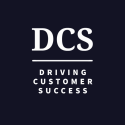What Does Customer Success Look Like in an Economic Downturn?
By Sylvie Woolf
How to recession-proof your company by calibrating your customer success strategies.
Many companies are facing mounting uncertainty amid a looming economic downturn and both companies in the private and public tech sector, are seeing slowing investor enthusiasm. To navigate this challenging time, companies looking to recession-proof their business must focus on driving revenue growth — which ultimately comes from long-term customer retention. Since retention is a company’s best growth strategy, now is not the time to pull back on investment in customer support and success.
According to research by Frederick Reichheld of Bain & Company, increasing customer retention rates by 5% increases profits by 25% to 95%. Naturally, upselling your products to existing customers rather than sourcing new ones is far more effective.
Following Pareto’s Principle, 80% of your revenue comes from just 20% of your customers. Effective customer support will be a crucial differentiator between the companies that endure (due to strong customer retention) and those that stumble in an uncertain market. As companies learn to navigate the current economic landscape, customer success teams must reevaluate their strategies to focus on providing even more value to their customers and securing retention.
Understanding the Big Picture of Customer Needs
A company’s customer success model can either be its greatest asset or biggest downfall during a precarious economy. If your company truly views itself as customer-centric, then a proactive, not reactive approach is critical as corporate budgets tighten amid the new economic headwinds. To ensure your model is fully and effectively meeting customers’ needs, you need to understand what works best for your company and product. Recently, many companies have been turning to “pooled models,” with which the goal is to connect the right person with the customer at the right time, but it’s important to note that this model isn’t suitable for every company.
The Pooled Customer Models
The first type of pooled model is high-volume, low-touch. This model is for companies with many lower-revenue customers for which it wouldn’t make sense to have a full-time customer success manager (CSM) assigned. Assignments of proactive outreach and inbound responses can be coordinated round-robin, prioritizing workloads and fast service.
The second type of pooled model is complex or horizontal products. This model is for companies where CSMs must maintain deep knowledge of the product across a broad range of use cases. With this model, account managers “own” the customer, and assigned or unassigned CSMs can tap in or be pulled in as needed.
A pooled model doesn’t make sense if CSMs need a baseline level of information about a customer to initiate a conversation. This model can also prove problematic for long-term growth if churn is too high, so it’s crucial to check in and make sure your customer success model is the right fit at each growth phase.
Learning Opportunities
As many of your customers face uncertainty surrounding their own near and long-term revenue growth, now is the time to reevaluate company and customer needs and whether your current customer success model meets both.
Humanize Every Touchpoint to Build Enduring Customer Relationships
Customer success was once conducted in-person before scaling back to virtual (long before the pandemic). Losing this human component made customer success far less predictable and ultimately increased churn. But when the pandemic disrupted in-person meetings and normal ways of communicating with customers (i.e. phone calls) shifted to Zoom, it reasserted the value of maintaining strong customer relationships.
An effective CSM understands that relationships drive business success, and the human touch is the foundation of strong relationships. Leveraging tools that empower human connections where it truly matters is key to creating a fruitful customer success strategy. By bringing more human touch points into what are usually tech-first interactions, CSMs have an opportunity to establish a relationship with the customer that provides value beyond the product offering itself.
Making space for human touch points around the higher-value conversations provides a significant opportunity for CSMs to prioritize customer relationships. While the goal of any customer communication is efficiency and accuracy, a rapport that goes beyond cut-and-paste interactions into truly collaborative support can make or break a renewal during this high-stakes time.
The stakes are higher than ever for customer success. As companies navigate an approaching economic downturn, the new focus for any customer success strategy should be proactive and engaged relationships. Adapting your customer success model, strengthening your infrastructure for collaboration, and providing a human element across all communication will make or break your company when a customer is deciding whether to continue the relationship. Leaning into the shifting economic tides as an opportunity to reassess your customer success strategies will pay dividends down the road and set you up for long-term growth.

Hakan Ozturk
Founder, theCScafe.com, #1 Weekly Customer Success Newsletter
Hakan Ozturk is a Paris-based Customer Success leader with over 15 years of experience in the computer software industry. Passionate about driving growth and delivering value to strategic customers, Hakan has established himself as a trusted industry expert. As the Founder of The Customer Success Café Newsletter and TopCSjobs.com, Hakan provides valuable industry insights and daily-updated job opportunities worldwide in the field of Customer Success. Connect with Hakan to boost your career in CS and your company’s potential for massive growth.

Leave a Reply